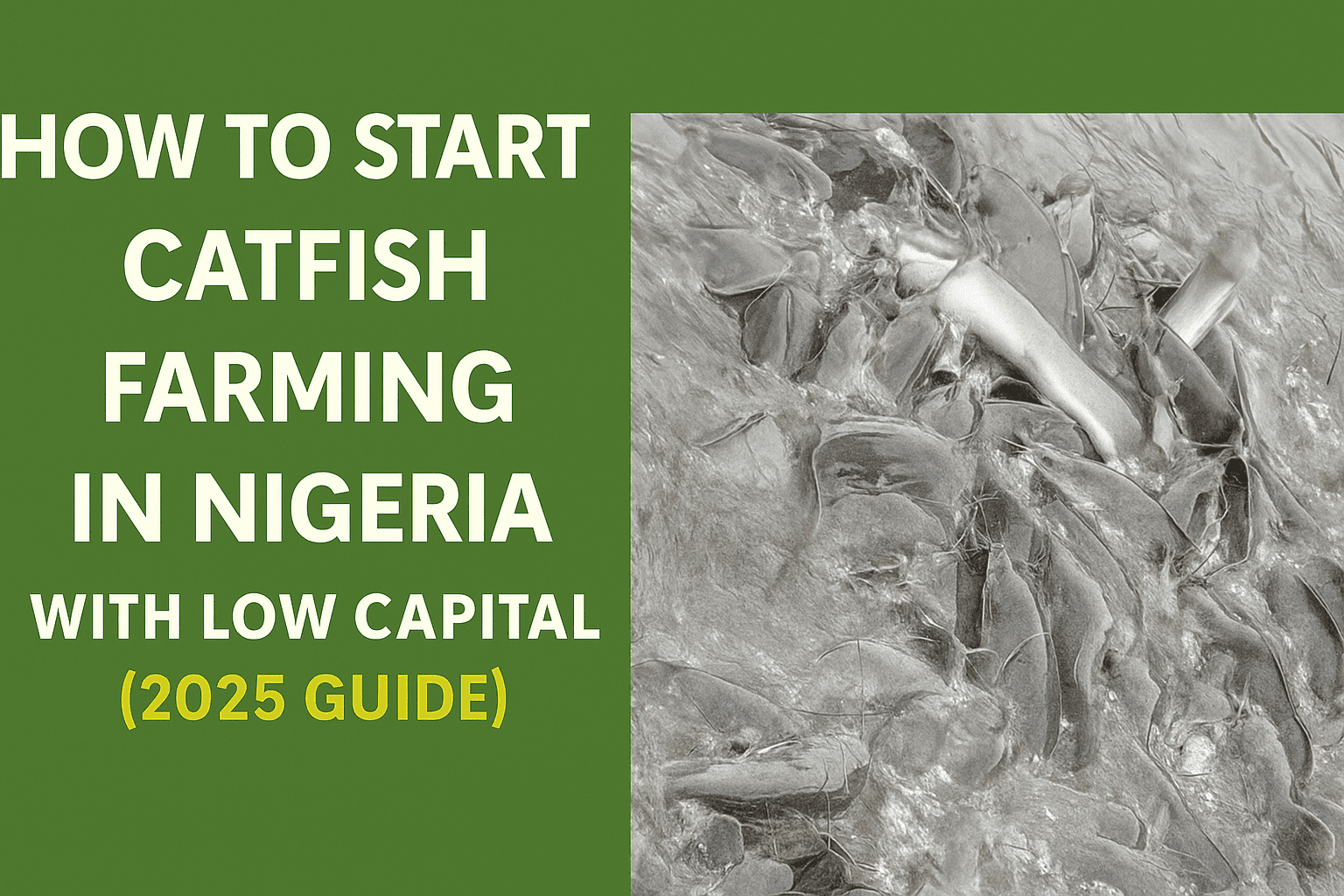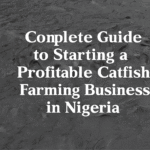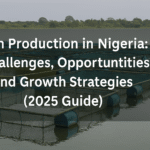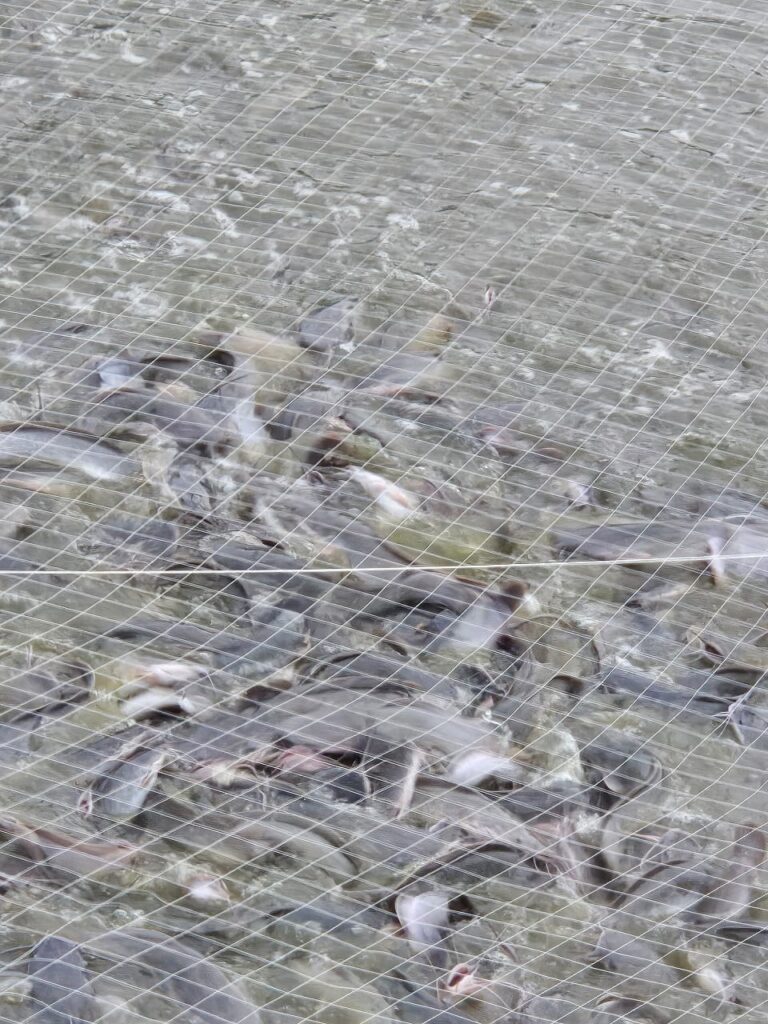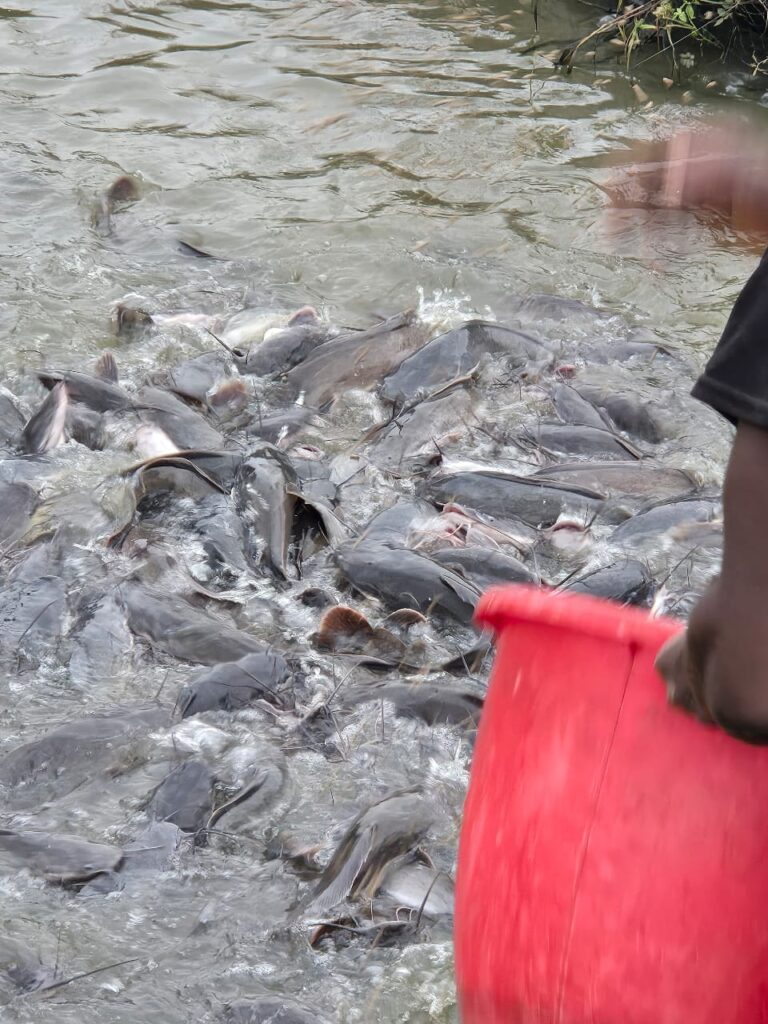Catfish farming is one of the fastest-growing agribusinesses in Nigeria. The rising population and growing demand for catfish as a protein source have made this sector highly lucrative. If you're looking for a profitable business with low capital requirements to start in 2025, you're in the right place. This guide will take you through a …
Catfish farming is one of the fastest-growing agribusinesses in Nigeria. The rising population and growing demand for catfish as a protein source have made this sector highly lucrative. If you’re looking for a profitable business with low capital requirements to start in 2025, you’re in the right place.
This guide will take you through a step-by-step process of starting catfish farming in Nigeria with low capital.
What is Catfish Farming?
Catfish farming is a form of aquaculture that involves breeding and raising catfish, such as the African catfish (Clarias gariepinus), in controlled aquatic environments, including concrete ponds, earthen ponds, tarpaulin tanks, and other aquatic enclosures, for commercial purposes.
Is catfish farming profitable in Nigeria?
Catfish farming is a highly lucrative business that can provide a sustainable and profitable income stream for farmers. Below are some of the reasons why catfish farming is profitable in Nigeria:
- High demand for catfish: One of the major reasons why catfish farming is profitable is because of the growing demand. Catfish is a popular staple food in many Nigerian households and restaurants. Interestingly, the demand continues to rise due to its affordability, nutritional value, and versatility.
- High market prices: The high market prices are another reason why catfish is highly profitable. Catfish, due to its widespread consumption, has higher market prices per kg compared to other fish species.
- Favorable Climate: Nigeria’s climate is favorable for catfish farming due to its tropical nature and abundant water resources.
Fast Growth Cycle: Catfish have a relatively fast growth cycle (4-6 months) compared to other fish species. This implies that farmers can harvest multiple times in a year, which increases the profitability.
Requirements for Starting a Catfish Farm with Low Capital
1. Land
This is a fundamental requirement for catfish farming. It serves as the base for the construction of the required structures to hold water and other necessary facilities.
2. Ponds or Tanks
A pond or tank is required for the consistent inflow and outflow of good-quality water.
3. Quality water
Good quality water is not only essential for the optimal growth of catfish, but it also reduces the chances of them being infected or having diseases. The water should be pure and free from any chemicals that will be harmful to them.
4. Good Fingerlings or Juveniles from a Reliable Source
It’s essential to procure your fingerlings or juveniles from reliable and trusted hatcheries. This is since your fingerlings or juveniles’ quality directly impacts the catfish’s health and growth rate.
An excellent way to get good-quality juveniles is to ask catfish farmers with impressive results over the years where they usually get their juveniles.
5. Protective Nets
It’s essential to cover the ponds or tanks with nets after stocking to prevent birds and other animals from preying on your juveniles. In addition, it helps to prevent your juveniles from jumping out of the ponds, which is very common when they are active.
6. Adequate Feed
It’s essential to get adequate feed for your catfish. It’s recommended to use quality floating feed at the start (usually 1-2 months) and then switch to sinking feed (locally made) as they grow.
Step-by-Step Guide to Starting a Small-Scale Catfish Farm
Step 1: Research
In catfish farming, just like any other business, a feasibility study is very important. You have to familiarise yourself with the business of catfish farming by seeking guidance from experienced catfish farmers, joining forums, and attending workshops to broaden your knowledge in the business of catfish farming. Below are some of the things you must investigate thoroughly:
Know your catfish: The most common species of catfish in Nigeria are Clarias gariepinus, Heterobranchus longifilis, and hybrid catfish. The hybrid and Clarias gariepinus grow faster than other species.
Know your soil: It is very important to know the type of soil you want to use for your catfish farming. Ideal soil should be either clayey or loamy because it retains water effectively. Avoid sandy soil because it has a very poor water retention capacity.
Step 2: Design your pond
Firstly, you will need to clear, lime, and disinfect your land before constructing your preferred pond system.
Below are the various pond systems:
Concrete pond: This is a solid structure built by mixing cement, gravel, sand, and water, which confines water for the raising of catfish. There are two methods of concrete ponds. The flow-through and the water recirculation method. The first method regularly releases water for pond maintenance, while in the second method, the water is simply recycled.
Plastic ponds: These types of ponds are made of heavy-duty plastic materials to confine water. They are popular because of their ease of use, flexibility, and affordability. In reality, they are temporary types of ponds and cannot be used for large-scale farming.
Earthen pond: This is an artificially constructed pond dug in the ground with the soil forming its base and wall.
Tarpaulin pond: This is a type of artificial pond made of tarpaulin material. They are durable and easy to set up.
Step 3: Stocking and Fingerling or Juvenile Selection
It is very important to stock your pond with healthy fingerlings or juveniles. This goes a long way to ensure optimal growth of the catfish. You can get this by asking experts in catfish farming where they always get their fingerlings, or do your research on places that have good-quality juveniles
Step 4: Feeding and nutrition Tips for healthy and fast-growing catfish
A proper catfish feeding not only guarantees fast and healthy growth but also helps to reduce cost and mortality rate. It’s important to ensure a balanced diet for your catfish. Avoid overfeeding because leftover feed can pollute the water.
Step 5: Disease prevention and management
Catfish are prone to a wide range of diseases. Below are a few measures that can be taken to prevent and effectively manage diseases:
Maintain water quality level: This can be achieved by regularly monitoring the water pH, oxygen, and ammonia levels.
High levels of these substances can stress the catfish and make them susceptible to diseases.
Keep your tank clean: This is a very important step to prevent diseases from spreading. Always ensure a regular change of water and removal of leftover feed from the water.
Quarantine new fish: Ensure you separate new fish from already existing ones. This helps you to fully monitor and observe any symptoms of disease before adding them to the main tank.
Step 6: Marketing and Sales
Effective marketing and sales strategies are crucial for the successful farming of catfish and maximising profit when they are ready for sale. Catfish farmers need to know their target market first and establish relationships with potential customers.
In this digital age, it’s also important to leverage social media platforms to create awareness for their products and engage with customers.
Step 7: Continuous learning and adaptation
Catfish farming, just like any other business, is an evolving field. It’s important to stay informed about new trends and techniques in farming and sales. Attend workshops, seminars, and conferences, and interact with successful catfish farmers to enhance your expertise and skills.
Common Mistakes to Avoid in Catfish Farming
As a beginner, below are the common mistakes to avoid to have a successful catfish farm:
1. Starting Big Without Experience
One of the common mistakes that beginners make is starting catfish farming on a large scale with little experience. It is advisable to start on a small scale, considering the cost of setting up, feeding, buying fingerlings, and maintenance.
2. Neglecting marketing and sales
Many catfish farmers solely focus on the rearing of catfish and pay little or no attention to how to sell at good prices. Make sure you understand your potential buyers and do your calculations right before the sale.
3. Poor Pond Management
Poor pond management exposes catfish to unhealthy conditions and eventual loss to the farmers. A catfish farmer must ensure that he regularly check and monitors the quality of water by testing the oxygen, pH, and ammonia levels. In addition, he should always remove waste and leftover feed from the pond to ensure healthy growth of catfish.
4. Catfish Feeding Errors
One of the most common mistakes beginners make in catfish farming is poor feeding habits. Poor feeding habits can lead to retarded growth, disease, and even death of catfish.
Many beginners tend to overfeed, thinking that it will result in rapid and healthier growth, but this only leads to wastage of feed and contamination of water. Underfeeding, on the other hand, leads to malnutrition, a slow growth rate, and increased susceptibility to disease. So it is important to stick to a balanced feeding habit.
Frequently Asked Questions (FAQs)
Q: How long does it take a catfish to mature?
A: It typically takes 4–6 months for catfish to reach table size, depending on the variety and quality of feed and water.
Q: What is the best feed for catfish?
A: Floating feed, like top feed, is vital during the early stages, and sinking feed as they grow
Q: How frequently do I need to change the water?
A: The water should be changed regularly—every 3–4 days.
Q: What are fingerlings?
A: Catfish within the age of 0–4 weeks
Q: What are juveniles?
A: Catfish within the age of 4–8 weeks.
Conclusion
Catfish farming is a profitable business due to its high demand. This guide covers all techniques of catfish farming, from the fundamentals to the advanced, needed to kick-start a profitable catfish farming business. Whether you are a beginner or an experienced farmer looking for a profitable business, catfish farming is the right choice.
Want to learn more? Contact us for expert advice, quality fingerlings, and premium fish feed to help you succeed.

